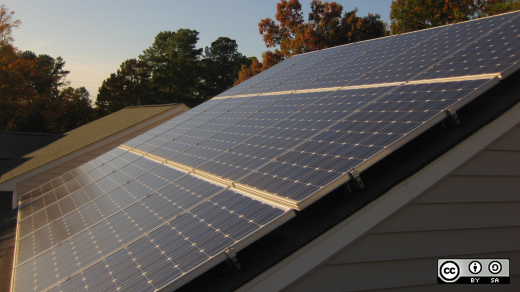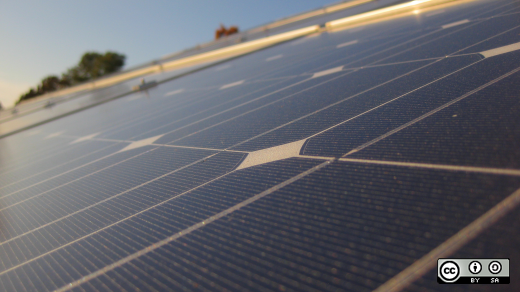Solar technology is exploding, despite what the cynics say. And so is progress. Companies like Solyndra, which looked like a good bet because it claimed a 30% gain in price-performance, crashed before take-off this year because price-performance improved 50%.
In such an environment, the benefits of keeping a new technology proprietary far outweigh the benefits of crowdsourcing. There are a host of companies at various places in the solar power business process, from planning commercial roll-outs to scaling production to delivering prototypes to researching new solutions. Each is going in a different direction.
Which is not to say open source has no place in solar. It does. In niches.
Opensource-solar.org is a good place to start our coverage of this. This is a wiki with a simple deliverable – "a modular system consisting of a solar panel, microcontroller based charge controller, and application specific modules for LED lighting and cell-phone charging with a DC-DC converter."
In other words, they're working at the very low end of the market, on systems readily available in stores and online for prices starting at $50.
Now a $50 mat sounds pretty good if you're in New York City. In Younde, Cameroon, however, that's pricey. How do you get the most from the technology? Cooperate, which is the goal of the African Network for Solar Energy (ANSOLE), founded in Tunisia months before that nation's revolution under African-Austrian scientist Dr. Daniel Ayuk Mbi Egbe, who works on organic solar cells at the Keppler University in Linz. (In his own work he's created cells with 4% efficiency.)
The point of open source cooperation at this point, in other words, is to create structures that can take what's available, when it becomes available, and then run with it.
Solar technology right now tends to go open source after the market has discarded it. Take, for instance the SolarFlower, an attempt to open source solar concentrator technology created by Daniel Connill, who calls his own blog Brute Force and Ignorance. Concentrators have been tried, and failed, in the commercial space, and Connill himself is basically a maker, the kind of hobbyist prone to making a WiFi reflector dish out of chicken wire and plywood.
That's cool, but that's not going to power the world.
Another attempt to apply open source to concentrator technology (which is relatively cheap, easy and simple) is the Solar Turbine project, which is working to lower the cost of making concentrators in the hope they might become useful. Their current design will cost $3,000 in parts and labor.
Google is taking things in a more practical direction, because it turns out the biggest costs in solar systems aren't the parts, but the installation and permits--the channel, in other words. It has put its AppEngine to work on the paperwork mountain, with a few Googlers pooling their 20% time to "make the task of building a web-based permitting application easier by providing examples of essential tasks in AppEngine."
During the summer I talked to someone working in the same direction, albeit manually. It's a solar installer called Tioga Energy, which released an "open source" solar power purchase agreement based on its own contract, called SurePath.
Right now it's efforts like Google's and Tioga's that will do more to sell solar systems than anything being done in open source with the technology.
But that's going to change.
 Around 2016 (more or less) we are going to reach a crossover point, called grid parity. The cost per watt of buying, installing and using a solar system is going to get below the actual cost of buying electricity from the grid, below the cost of generating it with coal or natural gas and transporting it to you.
Around 2016 (more or less) we are going to reach a crossover point, called grid parity. The cost per watt of buying, installing and using a solar system is going to get below the actual cost of buying electricity from the grid, below the cost of generating it with coal or natural gas and transporting it to you.
It's at this point that I expect open source to shine, because the supply-demand balance will shift. Instead of having to push demand for solar systems, manufacturers will find themselves falling behind demand, just as PC makers began running short (despite production increases) of consumer demand for PCs in the late 1970s, after decades where salesmen had to call on folks to sell mainframes or minicomputers.
When a technology becomes common, when it starts to become standardized, when it has proven itself in the market, that's when the savings and benefits of open source become obvious.
We're just getting warmed up.




Comments are closed.